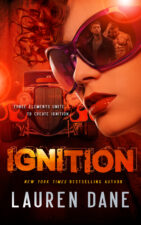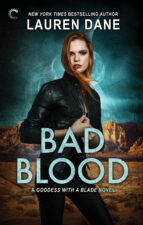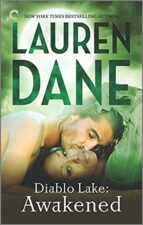|
Oct
1 2007 | ||
It’s interesting to ponder just why some books are challenged. Today I want to take a single one of the pack – a book that I can still remember reading for the first time back in the 10th grade – John Steinbeck’s Of Mice and Men. Steinbeck is one of my favorite authors of all time. In my opinion, he’s one of the greatest novelists who ever lived and certainly in the top five great American novelists. Grapes of Wrath (my personal favorite Steinbeck novel) is one of the finest views of American history from the viewpoint of the downtrodden ever written. But Of Mice and Men is more intimate and the impact is greater for different reasons.
If you read closely, you’ll see challenges from pretty much all sides of the political spectrum from Steinbeck’s patriotism being questioned to his use of what is now inappropriate racial language.
Here from the ALA site is a list of challenges and bannings of this great American novel:
Banned in Ireland (1953); Syracuse, Ind. (1974); Oil City, Pa. (I 977); Grand Blanc, Mich. (1979); Continental, Ohio (1980) and other communities. Challenged in Greenville, S.C. (1977) by the Fourth Province of the Knights of the Ku Klux KIan;VernonVerona Sherill, N.Y School District (1980); St. David, Ariz. (1981) and Tell City, Ind. (1982) due to “profanity and using God’s name in vain:” Banned from classroom use at the Scottsboro, Ala. Skyline High School (1983) due to “profanity.” The Knoxville, Tenn. School Board chairman vowed to have “filthy books” removed from Knoxville’s public schools (1984) and picked Steinbeck’s novel as the first target due to “its vulgar language:” Reinstated at the Christian County, Ky. school libraries and English classes (1987) after being challenged as vulgar and offensive. Challenged in the Marion County, WVa. schools (1988), at the Wheaton Warrenville, III. Middle School (1988), and at the Berrien Springs, Mich. High School (1988) because the book contains profanity. Removed from the Northside High School in Tuscaloosa, Ala. (1989) because the book “has profane use of God’s name.” Challenged as a summer youth program reading assignment in Chattanooga, Tenn. (1989) because “Steinbeck is known to have had an anti business attitude:” In addition, “he was very questionable as to his patriotism:’ Removed from all reading lists and collected at the White Chapel High School in Pine Bluff, Ark (1989) because of objections to language. Challenged as appropriate for high school reading lists in the Shelby County, Tenn. school system (1989) because the novel contained “offensive language.” Challenged, but retained in a Salinas, Kans. (1990) tenth grade English class despite concerns that it contained “profanity” and “takes the Lord’s name in vain.” Challenged by a Fresno, Calif (1991) parent as a tenth grade English college preparatory curriculum assignment, citing “profanity” and “racial slurs.” The book was retained, and the child of the objecting parent was provided with an alternative reading assignment. Challenged in the Riveria, Tex. schools (1990) because it contains profanity. Challenged as curriculum material at the Ringgold High School in Carroll Township, Pa. (1991) because the novel contains terminology offensive to blacks. Removed and later returned to the Suwannee, Fla. High School library (1991) because the book is “indecent” Challenged at the Jacksboro, Tenn. High School (1991) because the novel contains “blasphemous” language, excessive cursing, and sexual overtones. Challenged as required reading in the Buckingham County, Va. schools (1991) because of profanity. In 1992 a coalition of community members and clergy in Mobile, Ala., requested that local school officials form a special textbook screening committee to “weed out objectionable things:” Steinbeck’s novel was the first target because it contained “profanity” and “morbid and depressing themes: ‘Temporarily removed from the Hamilton, Ohio High School reading list (1992) after a parent complained about its vulgarity and racial slurs. Challenged in the Waterloo, Iowa schools (1992) and the Duval County, Fla. public school libraries (1992) because of profanity, lurid passages about sex, and statements defamatory to minorities, God, women, and the disabled. Challenged at the Modesto, Calif. High School as recommended reading (1992) because of “offensive and racist language.” The word “nigger” appears in the book. Challenged at the Oak Hill High School in Alexandria, La. (1992) because of profanity. Challenged as an appropriate English curriculum assignment at the Mingus, Ariz.Union High School (1993) because of “profane language, moral statement, treatment of the retarded, and the violent ending.” Pulled from a classroom by Putnam County, Tenn. school superintendent (1994) “due to the language:’ Later, after discussions with the school district counsel, it was reinstated. The book was challenged in the Loganville, Ga. High School (1994) because of its “vulgar language throughout” Challenged in the Galena, Kans. school library (1995) because of the book’s language and social implications. Retained in the Bemidji, Minn. schools (1995) after challenges to the book’s “objectionable” language. Challenged at the Stephens County High School library in Toccoa, Ga. (I 995) because of “curse words: ‘The book was retained. Challenged, but retained in a Warm Springs, VA. High School (1995) English class. Banned from the Washington Junior High School curriculum in Peru, III. (1997) because it was deemed “age inappropriate:” Challenged, but retained, in the Louisville, Ohio high school English classes (1997) because of profanity. Removed, restored, restricted, and eventually retained at the Bay County schools in Panama City, Fla. (1997). A citizen group, the 100 Black United, Inc., requested the novel’s removal and “any other inadmissible literary books that have racial slurs in them, such as the using of the word ‘Nigger: ” Challenged as a reading list assignment for a ninth grade literature class, but retained at the Sauk Rapids Rice High School in St. Cloud, Minn. (1997). A parent complained that the book’s use of racist language led to racist behavior and racial harassment. Challenged in O’Hara Park Middle School classrooms in Oakley, Calif. (1998) because it contains racial epithets. Challenged, but retained, in the Bryant, Ark. school library (1998) because of a parent’s complaint that the book “takes God’s name in vain 15 times and uses Jesus’s name lightly.” Challenged at the Barron, Wis. School District (1998). Challenged, but retained in the sophomore curriculum at West Middlesex, Pa. High School (1999) despite objections to the novel’s profanity. Challenged in the Tomah, Wis. School District (1999) because the novel is violent and contains obscenities. Challenged as required reading at the high school in Grandville, Mich. (2002) because the book “is full of racism, profanity, and foul language.” Banned from the George County, Miss. schools (2002) because of profanity. Challenged in the Normal, Ill. Community High Schools (2003) because the books contains “racial slurs, profanity, violence, and does not represent traditional values.” An alternative book, Steinbeck’s The Pearl, was offered but rejected by the family challenging the novel. Source: 2004 Banned Books Resource Guide, by Robert P. Doyle.
But what you might learn, if you weren’t so busy freaking out about Steinbeck’s patriotism, is what life was like for migrant farmworkers in the 1930s and 40s in this country. If hard working men and women scraping to simply exist don’t “represent traditional values” who does?
By the way, the title comes from a Robert Burns poem:
The best laid schemes o’ mice and men
Gang aft agley
And leave us nought but grief and pain
For promised joy!
When Of Mice and Men was published, American farmworkers, much like many other Americans, faced dire circumstances – partly due to the 1929 Stock Market crash and also due to the invention of grain harvesters which eliminated huge swaths of workers from the fields. You had essentially 4 or 5 men doing the work of 350 a few years before that. So you have these two men, George and Lennie facing a new world and their place is shrinking.
Huge numbers of mostly men but also women and children travelled the countryside between the 1880s and the early 1930s harvesting wheat. They’d earn like 3 bucks a day and live in barracks style housing through New Deal programs.
Who tells their story? Do we not tell it because it’s depressing? Do we cut bits out because of what the class and racial reality was at that time? Do we not GIVE CONTEXT to our children through these stories?
This book is about the American Dream, it’s about connection and loss, it’s about family and friendship, it’s about aching loneliness. Yes, there’s a lot of metaphor but it’s worth it. The very idea that in the 1990s people tried to ban this book because it didn’t encompass traditional values when it is INDEED wholly about traditional values and the people who make up the fabric of this nation seriously makes me livid. As a parent, I cannot countenance people like this trying to limit my children’s learning.
If you haven’t read it yet, I highly recommend it. It’s not lighthearted, it is tragic, I won’t kid you. But it’s an amazing novel. Check it out from your library or grab it from your local bookstore.





October 1st, 2007 at 5:38 pm · Link
I thought all his books were very grim, but then the subject matter and time period were…grim. And what are we going to do, pretend the Depression didn’t happen? It’s American history.
October 2nd, 2007 at 7:13 am · Link
I remember reading it in HS in all places Catholic School. If you could read it there where God knows all censorship starts you should be able to read it anywhere. I find it amazing that in the last 10 years where most of the quotes come from people could actully consider this obscene for the reason it takes the Lords name in vain. If that is the reason we need a better one than that to take it off the shelf.